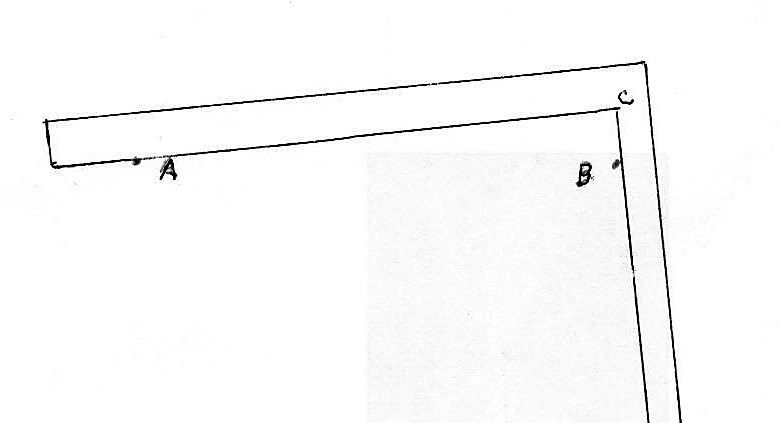To Layout a Circle using a square:
1. Drive small brads the Diameter of the Circle, points "A" and "B".
2. Place the body of your Square across the points as shown.
3. Holding the point of your Pencil at Point "C" where the Tongue and the Body meet, slowly move the square, keeping the Square touching points "A" and "B".
You can draw up to a 14 inch Circle this way and a Larger one by flipping the square and drawing from both sides.






 Jr.
Jr. 

 Reply With Quote
Reply With Quote





